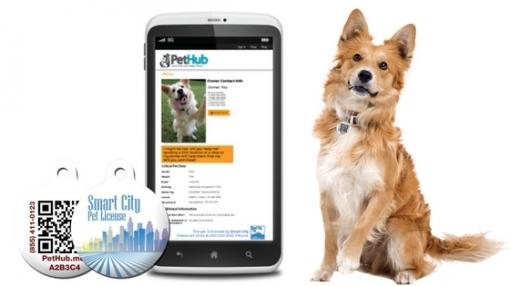Recently, I’ve seen several news articles about municipalities considering abandoning external identification tags for pet licensing and moving to a microchip-only program for pets in their communities. I find this approach worrisome at best, and potentially detrimental to the overall lost pet recovery of pets in their community. Why? Because it takes too many things going “right” for microchips to work. When pet microchip manufacturers talk about their product, they are optimistic to the point of arrogance. While confidence and hubris gets them sales, it is at the cost of animal safety and an increased expense to animal welfare organizations and individuals who replace a physical ID tag with a surgically implanted chip.

I acknowledge that my credibility is suspect in pointing out the microchip short-comings because my company develops modern digital identification tags and software solutions. Anyone spending a modicum of time speaking with animal care professionals, however, will quickly learn the truth that microchip companies have oversold their solution as the panacea for pet identification.
Before I go into the failings of microchips, I want to first point out that I am actually a solid fan of microchipping animals. A chip is a critical component to a pet safety plan and what I consider the final line of defense in helping someone identifying my pets. Microchips are only a single tool, however, and not the soul solution chip manufacturers would have you believe they are.
Here are 8 of the top failings of microchips:
- As a pet license, it actually increases municipalities’ costs – it seems a no-brainer to move to a surgically implanted tag to ensure a found animal can be identified, right? What municipalities learn later, however, is that their costs skyrocket due to the fact that an animal now must be brought to them (or a local veterinarian) to be scanned. Previously, someone finding a wayward pet could have made a quick phone call from a number on a tag (I know of two major municipalities that regret their decision of moving to microchips-only as a pet license and are now returning to physical ID tags for this very reason)
- Requires the kindness of strangers – thank goodness there are people willing to take time out of their schedules to take an unknown animal in their car and to a shelter to be scanned; not everyone is so willing. Worse, many people won’t take an animal to a shelter simply because they think they’re signing that animal’s death warrant. In addition, I continue to be shocked by how many people don’t realize that they should always take an animal in to get scanned not realizing the pet might have a microchip. A physical ID tag with a simple phone number or link to an online profile removes this barrier to getting a lost animal help
- Leads to animal theft – “stray” animals are taken to a well-meaning animal lover’s home because they didn’t find a physical ID. Now this animal has a “new family.” In short, intentional or not, that animal was just stolen away from its home. Nightly news often has “feel good stories” about an animal being reunited with its family after 5 years missing. When the new family took the dog or cat in for a check-up, a microchip was found and the original family located. To me these are “feel bad stories” because of the 5 years of lost time that could have been avoided with a physical ID
- Out of date information – roughly 50% of the data that a microchip is pointing to is out of date either because it was never activated or the pet owners never updated the information. Imagine being a vet or shelter worker and feeling that hope when the scanner blips, signifying the animal is chipped, only to be devastated when the information is outdated
- Migrate within the body – microchips will actually move over time and may not be located during a rudimentary scan
- Multiple manufacturers – there are at least 6 microchip companies (reference: Steve Dale, May 13, 2015, “Some Pet Microchip Companies Acting Irresponsibly”) and as of Mr. Dale’s article in May 2015, the one he referenced – K9Microchips – no longer has a working website. Not all microchip companies are alike so confirm with your pet care provider that you are getting a chip by a reputable company, such as Home Again, PetLink or Avid
- Multiple frequencies – many of these RFID (radio frequency identification) chips work with different scanners. There are some universal scanners out there, but not everyone has these expensive devices. It is possible for a vet or animal shelter professional to run an incompatible scanner directly over a chip without even knowing it, thereby drawing the conclusion the animal has no ID
- Surgery is required – as I already stated, I’m a fan of using microchips when combined with an external ID. However, not everyone is willing to have a foreign object embedded under their animal’s skin
The four take-aways I want to leave you with are these:
- Have a physical ID tag on your pet and complement it with a microchip
- Ensure your animal care provider is using a well-known, trusted chip manufacturer
- Update your pet’s chip information when you move or go on an extended trip so that your pet sitter can be contacted
- Don’t buy into the bunk that a microchip will solve all of your pet identification needs
Tom Arnold is the founder of PetHub.com, an Internet company providing digital ID tags and software services to help lost or stolen animals return home again quickly. PetHub’s IDs are currently in use by over 280 communities in the U.S. as a pet license or shelter adoption tag.
Additional reading:
- "Microchipping of Animals" (AVMA.org)
- "Identification Tags & Microchips" (American Humane)
- "Pet Preparedness Social Media Toolkit" (Ready.gov)


